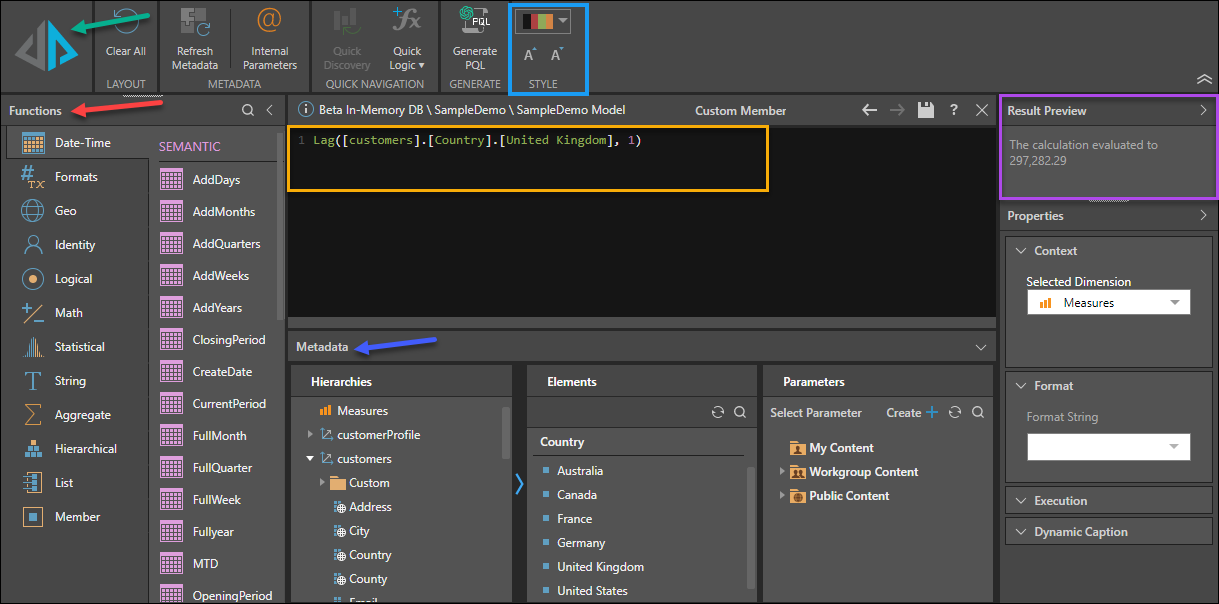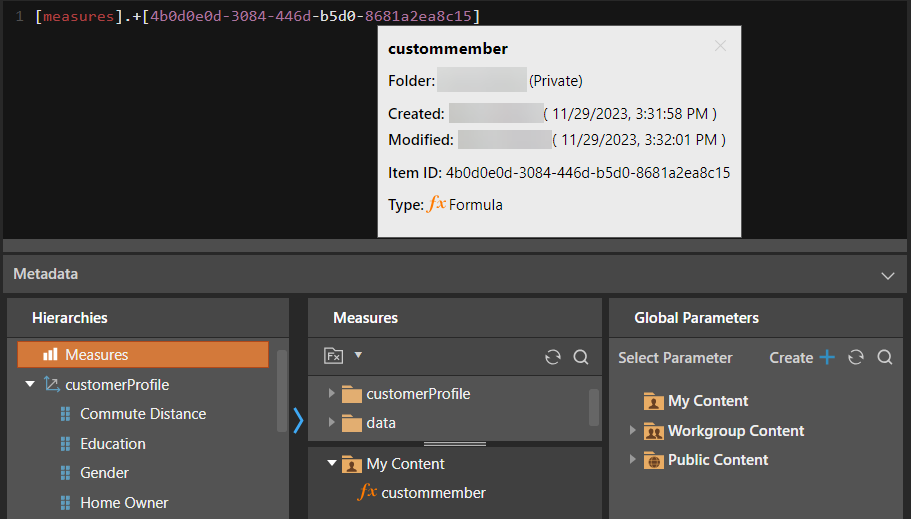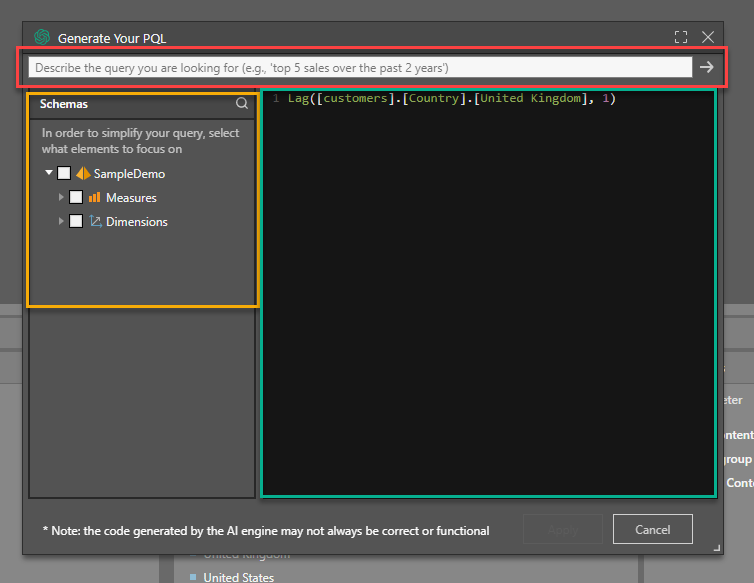Script Editor
The IDE is accessible from the following designers:
Access the Script Editor
To access the IDE, click the Script Mode button from the top ribbon:

Note that:
- Any logic already added to the canvas will appear in script mode
- Once in script mode, you cannot go back to the canvas view
- You can add scripts from other locations; for example, copy and paste scripts, or drop files containing scripts, or drop metadata from Microsoft SQL Server Management Studio onto the script window
- Use the Metadata panel to insert the relevant metadata into the script
Script Editor Workspace in Formulate
- From the Script Editor, navigate the Functions listing (red arrow below) and drag the required function onto the canvas (orange highlight).
- From the Metadata panel (blue highlight), inject the required model metadata into the function.
- As usual, the execute button (green arrow) is used to test the function; the results are displayed in the Result Preview panel (purple highlight).
- Use the Style options in the ribbon (blue highlight) to set the design theme and text size. The design theme determines the background color of the script editor, and the text color.

Navigating Custom Formulations in the Script Editor
You can add existing custom formulations from the Metadata panel to your custom script:

When you add custom formulations from the Metadata panel to the script editor, you can hover over the Item ID in the script to see a tooltip displaying the item name, its folder location, who created it, the create date, modification date, item ID, and formula type.
You can also open the selected formula in the graphical user interface (GUI) by holding Ctrl and clicking on the Item ID.

Script Language
The script language is PQL, unless using OLAP, Tabular or BW models, in which case the script language is MDX. To review a reference library of MDX functions, see Microsoft's MDX Function Reference.
The script editor allows advanced users to construct PQL and MDX formulations using code, rather than the nodes used in the main Custom List and Custom Member designers.
Use the ChatGPT AI-driven PQL function (from the Common PQL functions) to write PQL expressions and generate various assets. This can be used to add additional information and background to your presentation; it cannot tell you about your data set. The ChatGPT PQL function is supported in:
- Click here to read how the PQL Editor works.
Use AI to Generate PQL
Use the OpenAI integration to generate PQL or MDX code for custom formulas, lists, KPIs, and shared custom scripts.

Warning: AI-generated assets are generated from public domain algorithms, which can produce both erroneous and inconsistent/ random results. Use at your own risk.